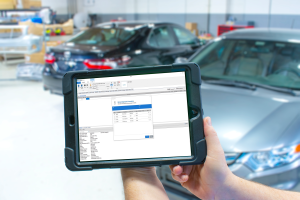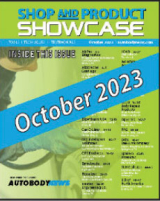CIECA hosted its latest CIECAST webinar on June 23, “Charged for Success: Understanding EV Trends and Their Impact.”
Ryan Mandell, director of claims performance for Mitchell International, spoke about the trends in electric vehicle adoption and what is driving them, how EVs should be handled differently in a repair facility than their gas-powered counterparts, and what needs to be done to facilitate better, safer repairs.
“This is a critical topic for collision repair and the industry as a whole,” Mandell said.
Mandell said the last couple of years have been tough on new vehicles sales overall, due to parts shortages and supply chain issues---except for EV sales, which have been a bright spot.
Gross volumes of EV sales grew 5% at the same time total vehicle sales decreased 15%, Mandell said.
Bloomberg recently projected worldwide EV sales to grow from 6.6 million in 2021 to 21 million in 2025.
“People are very bullish on EVs,” he said.
Mandell said charging infrastructure is growing but has a long way to go. DC Fast Chargers---which will be key to making long-distance traveling feasible, as they can charge a battery to 80% in about a half hour---increased in the U.S. by 24% in 2021.
Batteries are also improving to increase range and decrease “range anxiety” among drivers, Mandell said. The battery is 35% to 50% of the total cost to build an EV, so as mining for components becomes more efficient, it will drive down what consumers have to pay for an EV.
However, the recent increasing prices for many of the metals that go into batteries, including nickel, lithium and cobalt, will offset some of those mining efficiency gains, Mandell said.
“I think it will be closer to the end of the decade before we see price parity between EVs and ICE vehicles,” Mandell said.
As more EVs are sold, EVs will constitute a greater share of repairable claims coming into shops. They still make up less than 1% of claims, Mandell said, but that will continue to grow at an increasing rate.
Repairers need to be ready, he said.
“An EV is not just an electrified variant of an ICE,” Mandell said. “It really is completely different, and needs to be treated as such.”
EVs have nearly double the number of semiconductors of an ICE vehicle, and a greater reliance on high-voltage batteries, which add to the complexity of repairs.
“There are extra components (on an EV) and the systems are more interconnected,” Mandell said.
Based on model year 2015 vehicles and newer only, the average ICE vehicle has 8.7 fault codes per scan, while an EV averages 13.8.
Estimate lines also increase---the average ICE vehicle’s estimate has 35.5 lines, while the average EV’s has 47.7.
“It shows how interconnected the systems are,” Mandell said. “EVs rely on more semiconductors, more digital systems, more advanced electronics to do the same tasks as mechanical systems in ICE vehicles.”
A front impact on an EV has a far greater likelihood of affecting other systems throughout the vehicle, he said.
Mandell noted the scan data he presented excludes Teslas, as no aftermarket tool can scan them.
EVs also use a lot more lightweight materials, like aluminum and carbon fiber, for major component sheet metal parts to offset the heavy batteries, Mandell said. Those materials will respond differently in an accident, which will create the need for a new process to decide what can be repaired or has to be replaced, and will need new tools.
EVs also have significantly longer cycle times, Mandell said---on average, keys-to-keys for a drivable claim takes 8.4 days, compared to 6.9 days for an ICE vehicle.
Mandell said there are new precautions that must be taken to avoid damaging the battery and keep everyone safe during the repair.
“There are precautions that need to take place even before a basic teardown,” he said. Also, the battery has to be removed before going to the paint booth, due to the heat involved, which adds two hours to the process.
Mandell said it will be important to set appropriate expectations for the vehicle owner from the start.
“This is likely most owners’ first experience repairing an EV,” he said. “You will have to help them understand why the repair process is so different from an ICE. Have a very honest discussion at the beginning about additional steps that need to be taken to repair it safely. I think that really sets up the overall outcome to be a positive one.”
Mandell said he thinks estimates for EVs need to evolve, rather than just using the same template as for an ICE vehicle.
“We need to make sure it’s built in a way to facilitate a safe and proper repair, and is efficient as well,” Mandell said.
He suggested adding EV-specific categories that address the completely different chassis, and adding “EV” as a separate vehicle type, as it’s not only important to note if the vehicle is a truck, van or car.
He also suggested creating new EV specific templates and qualifiers, like battery capacity.
“EVs overall are becoming more widespread,” Mandell said. “There are 84 EV models in the U.S. now; there were 14 just five years ago. We are going to see the tech improve as well. Rising fuel prices will also be a tailwind for EV adoption.”
Watch the full CIECAST above or on cieca.com.










Abby Andrews